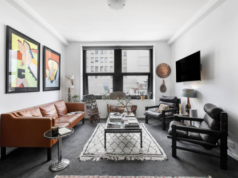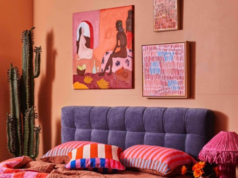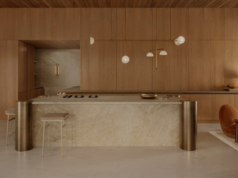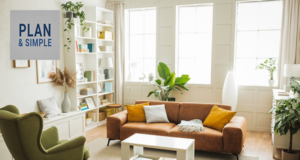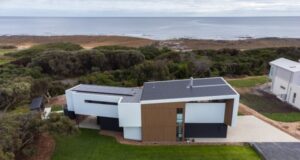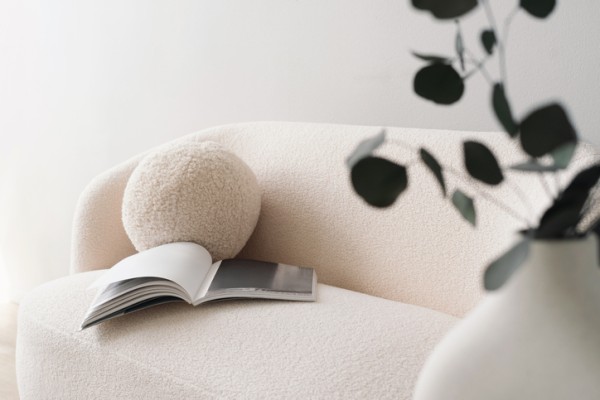
Step inside the modern Australian home and you’ll feel it before you see it. A quiet calm that comes from spaces stripped of excess yet rich with warmth. The cool greys and sharp whites that once defined contemporary design have softened, replaced by clay, sand and oatmeal tones, matte finishes and natural materials that invite touch. This is warm minimalism, a design movement that’s reshaping how Australians want to live.
A softer minimalism
Minimalism has long been associated with sleek surfaces and stark palettes, a pursuit of simplicity often bordering on austerity. But warm minimalism takes a different approach. It’s about restraint without sterility, simplicity with soul.
“People still want the calm that comes with minimalism,” Sydney interior designer Laura Bennett says. “But they don’t want to live in a gallery. They want their homes to feel human. Tactile, layered, lived-in.”
In practice, that means paring back clutter while embracing the imperfections of natural materials. Think limewashed walls with subtle texture, timber with visible grain and linen upholstery that creases beautifully with use. These details add depth, warmth and authenticity. Qualities that cold minimalism often lacked.
Texture as the new luxury
As home owners move away from decorative excess, texture has become the new marker of luxury. It draws the eye, softens the space and creates visual interest without relying on pattern or colour.
“Texture adds a kind of quiet drama,” Brisbane-based stylist Megan Lowe says. “A handmade ceramic, a rough plaster wall or a raw timber bench, they all tell a story through touch.”
Common pairings include honed stone against natural timber, boucle fabrics with woven rugs and smooth ceramics offset by matte metal fixtures. The key is contrast: polished meets rough, soft meets structured.
This textural interplay works especially well in Australia’s light-filled homes, where sunlight brings surfaces to life. “Natural light is a textural designer’s best friend,” Megan says. “It highlights every ripple, weave, and grain.”
The role of colour and light
While traditional minimalism leaned heavily on monochrome, warm minimalism embraces an earthier palette inspired by the Australian landscape. Ochre, terracotta, eucalypt green, sand and stone have replaced stark whites and cold greys. These tones pair beautifully with warm timber and neutral linens, creating spaces that feel grounded and timeless.
Lighting, too, plays a central role. Layered lighting, a mix of ambient, task and accent, helps build softness and atmosphere.
“Harsh overhead lighting can flatten even the most beautiful textures,” Melbourne lighting designer Chris Palmer says. “You want to create shadows that dance across the surface, that’s what makes a space come alive at night.”
Materials that tell a story
Warm minimalism celebrates materials that age gracefully. Rather than chasing a polished, permanent look, designers are embracing patina, the subtle marks of time and use that add character.
Concrete benchtops that darken slightly over time, brass fixtures that develop a soft sheen and natural stone that wears with use are all welcomed, not corrected.
“Imperfection is part of the aesthetic,” Laura says. “We’re moving away from the idea that everything has to look brand new. Homes are meant to evolve annd that’s what makes them beautiful.”
This philosophy also aligns with growing sustainability concerns. Natural, long-lasting materials such as timber, stone and wool not only look and feel authentic but also reduce reliance on synthetic, short-lived alternatives.
“There’s a shift toward mindful materiality,” Megan says. “People are asking where their materials come from, how they’re made, and whether they’ll last.”
The emotional appeal
At its core, warm minimalism isn’t just about aesthetics, it’s about how a space makes you feel. It creates calm without coldness, clarity without emptiness. In a world saturated with noise and distraction, the appeal is obvious.
“After years of digital overload and uncertainty, people crave spaces that restore them,” Laura says. “A warm, textural home offers that sense of balance. It feels like an exhale.”
Soft furnishings and sensory layers like wool throws, sheer curtains and textured rugs contribute to that feeling. The aim is to design a space that feels grounded, personal and quietly luxurious.
How to bring it home
For home owners looking to embrace warm minimalism, designers recommend starting small:
- Simplify, don’t sterilise: Declutter, but leave room for personality like a favourite book, a sculptural vase or a handwoven basket can serve as focal points.
- Layer natural materials: Combine timber, stone, linen and clay for depth and contrast.
- Choose a cohesive palette: Stick to warm neutrals and muted tones inspired by nature.
- Invest in quality lighting: Use warm bulbs and layered light sources to accentuate textures.
- Embrace imperfection: Allow materials to age naturally and celebrate the marks of daily life.
“Warm minimalism isn’t about perfection,” Laura says. “It’s about creating a space that feels calm, natural and real, one that invites you to slow down.”
A timeless evolution
As design trends come and go, warm minimalism stands out for its timelessness. It’s not driven by novelty but by a deeper desire for comfort, connection and authenticity.
Perhaps that’s why it resonates so strongly in Australia where light, nature and easy living are part of the national design DNA. Whether it’s a coastal retreat, a renovated terrace or a new suburban build, the principles remain the same: simplicity, warmth and texture. In the end, warm minimalism is less about what you add and more about what you allow to remain, the gentle textures, the natural tones, the quiet spaces that let life unfold.

